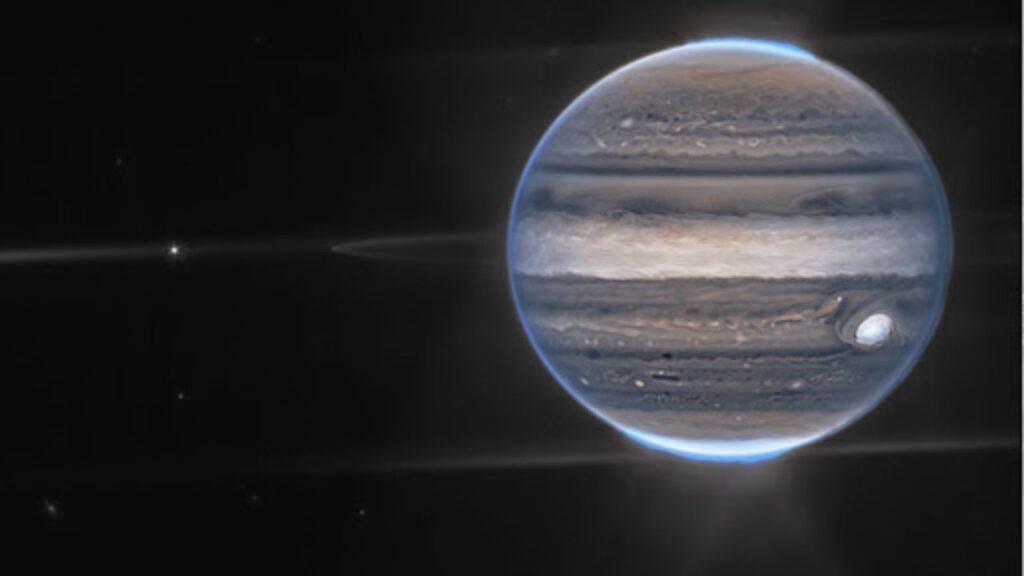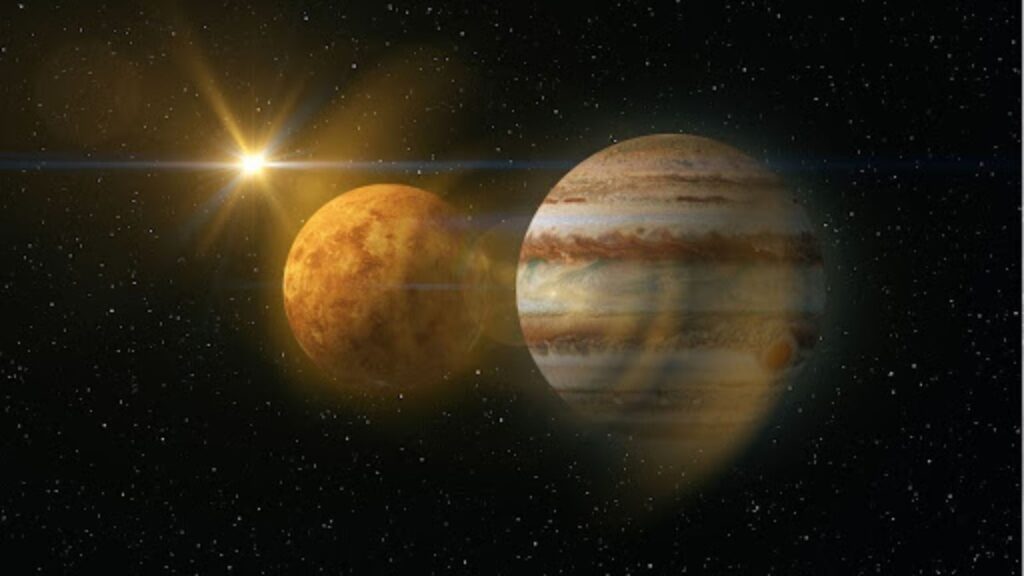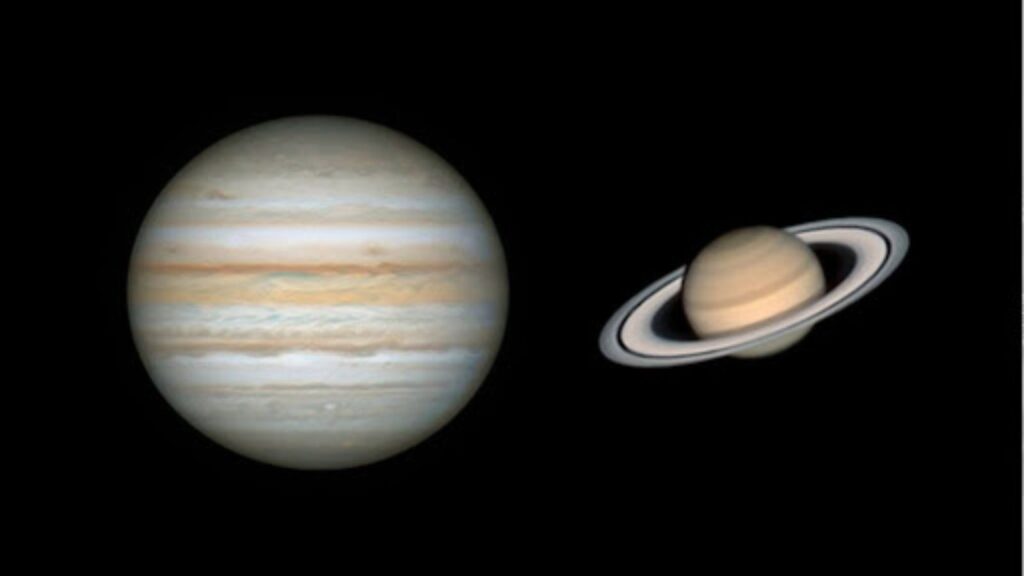Authors name: Emma Thorpe
Jupiter is the 5th planet from the Sun and the largest in our Solar System. It has been long known for its impressive size and distance from our home planet. But does Jupiter have rings like other gas giants? In fact, it does! To date, scientists have come up with many theories about them and their formation. So, let’s dig a little deeper into how many Jupiter rings there are, how they were discovered, and a few other interesting facts that may surprise you.
Does Jupiter Have Rings?
Yes, it does. In fact, all our Solar System’s giant gas planets have rings. That includes not only Jupiter and Saturn but also Neptune and Uranus. But Neptune’s and Jupiter’s are too flimsy to view using stargazing instruments we have available. Outwards Jupiter, there’s the 12,500 km thing inner “halo ring.” The planet has several ring layers:

● main
● halo
● Thebe gossamer
● Amalthea gossamer
Only two circles surrounded by faint “gossamer” layers are well-defined. Faint Jupiter rings are made of dust formed from dark particles resulting from meteorite impacts on the planet’s smaller Moons. However, there is reason to believe that planetary radiation gradually destroys these particles, and Jupiter’s rings in the past may have been more massive than they are now.
So far as we know, today’s circular system is less than one million years old, but it is already difficult to view because it’s very faint.
When were Jupiter’s rings discovered?
On March 4, 1979, NASA’s Voyager 1 probe captured the first image of Jupiter’s rings. This picture revealed very small rings on our Solar System’s largest planet. 45 years later, we are still learning about these systems, their formation, and their role. However, even though we only received factual confirmation about the rings’ existence in the late 1970s, theories about their existence emerged way before that.
The first one to form an idea about Jupiter’s circles was Sergei Vselhsvyastkij. In 1960, the astronomer who was originally studying comets concluded that these comets come from the planet’s rings – possibly because of volcanic activity on Jupiter’s satellites, of which there are plenty. For instance, there’s Thebe orbiting inside the planet’s outermost ring; there’s also the small Moon Adrastea that clears out a path through Jupiter’s innermost halo. And Metis orbits just within Adrastea’s path.
How Many Rings Does Jupiter Have?
So back to our main subject – Jupiter rings how many do we know about now? So far, we have only discovered four systems, of which only two are clearly visible. But this situation may soon change. In 2016, the Juno spacecraft entered Jupiter’s orbit to study the planet’s environment and has been doing so since then. One of its objectives is to study the planet’s magnetic field, which may have contributed to the formation of Jupiter’s rings. Jupiter’s Moons are also very important for the ring system’s dynamics. Their gravitational pool causes ring disturbances, so the rings change and shift with time. For instance, we have the Moon Prometheus orbiting the F-ring, Jupiter’s outermost main ring. This Moon’s gravitational influence causes waves and ripples inside the ring, creating gaps and different other structures that the spacecraft Cassini has captured.

Why Did Jupiter Lose Its Rings?
Jupiter is a massive planet, and its enormous Moons prevent new rings from forming. Their gravity attracts particles that would have otherwise formed into ring systems. This is a continuous process that is happening all the time. Scientists are still looking into the changes in the Jupiter ring system, which require careful observation and analysis. The good news is that today we already have the technology to do so.
As we observe Jupiter, we can see that its rings are very thin and lack the extensive ice and rock compositions that make other planet’s rings so vivid and durable. So, Jupiter hasn’t actually lost any of its rings; they’re just very faint compared to the prominent rings of other gas giants.
Can You See Jupiter’s Rings With Amateur Telescopes?
Jupiter is a huge and radiant planet. Its light doesn’t waver or tremble like the light of stars does. You can see it without using any tools, but you can’t see its rings. Modern astronomers use only the most advanced equipment to study this planet.
We can’t see Jupiter’s rings from Earth not only because their formations are thin and almost invisible against the huge planet’s background and its satellites but also because they don’t include ice, like Saturn’s rings. Since they contain a lot of ice, Saturn’s rings were easier to discover. But as mentioned, Jupiter’s rings are made almost entirely from dust, which doesn’t reflect light that well.
So, if you want to see Jupiter’s rings, you need to go to an astronomical observatory. Or, you could stay tuned with us for more discoveries and scientific approaches on the subject!
